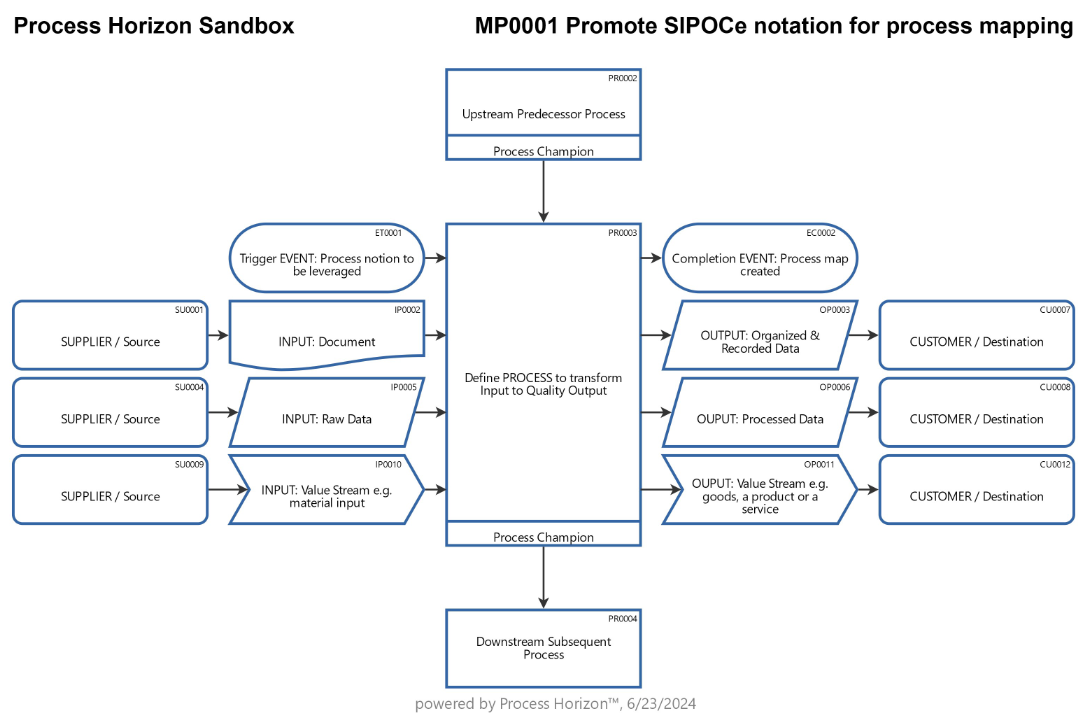Event-driven SIPOCe process modeling

The basic SIPOC model can be expressed as an Input → Process → Output relationship, framed by Suppliers & Customers. At its core, the equation can be written as:
Output = f(Process(Input)) where:
- Suppliers (S) provide Inputs (I)
- Process (P) transforms inputs through value-adding steps
- Outputs (O) are the results of the process
- Customers (C) are the recipients of the outputs
In a SIPOC model, suppliers deliver inputs, which are transformed by the process into outputs and those outputs are delivered to customers.
Closed-loop SIPOC
A closed-loop SIPOC recognizes that feedback from customers or other stakeholders is fed back into the process to drive adjustments.
- The Customer’s reaction, KPIs or satisfaction become new inputs.
- This feedback loop closes the chain, making it more cyclical than linear.
- Example: Customer complaints which are fed back into design or operations to get improved outputs.
SIPOCe with External Trigger Event
Sometimes, the process doesn’t just run continuously; it’s activated or adjusted by an external trigger (outside the normal SIPOC cycle).
- The trigger is an event, condition or signal from the environment that starts, stops or modifies the process.
This can be modeled as an external input signal that doesn’t flow through the standard supplier–input–process path.
Closed-loop SIPOC with External Trigger combined
- Suppliers, Inputs, Process, Outputs, Customers remain the backbone.
- Feedback loop from Customers (e.g. complaints, quality metrics, usage data) is captured & reinjected into Suppliers/Inputs or directly into the Process.
- External Trigger Event is represented as an overlaying event coming from outside the SIPOC box, initiating or modifying the cycle.
- The SIPOC becomes a dynamic, living system rather than a static map.
- The external trigger ensures the process is event-driven (not just continuous flow).
The closed-loop ensures the process is self-correcting & adaptive.
Example scenario: Automated loan approval
- Suppliers: Credit bureau, applicant data
- Inputs: Application form, credit score
- Process: Loan evaluation algorithm
- Outputs: Approved/denied decision
- Customers: Loan applicants.
- Feedback loop: Customer feedback on fairness or regulator audits which are fed back into algorithm tuning
- External trigger: New regulation introduced which triggers an update cycle even if customer feedback has not yet flagged issues
A closed-loop SIPOC extended with an external trigger event describes a process model where customer feedback forms an integral feedback loop into the system and external events act as triggers that start, adjust or override the process cycle. This creates an adaptive, event-driven & self-correcting process view.

